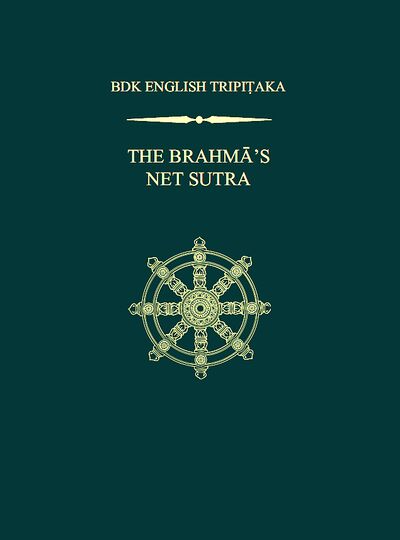|
|
| Line 28: |
Line 28: |
| ***{{i|9. The Mental State of Joy|12}} | | ***{{i|9. The Mental State of Joy|12}} |
| ***{{i|10. The Summit Mental State|12}} | | ***{{i|10. The Summit Mental State|12}} |
|
| |
| **{{i|The Ten Nourishing Mental States|13}} | | **{{i|The Ten Nourishing Mental States|13}} |
| ***{{i|1. The Mental State of Kindness|13}} | | ***{{i|1. The Mental State of Kindness|13}} |
| Line 62: |
Line 61: |
| ***{{i|9. The Ground of the Flower Ornamentation of the Essence|34}} | | ***{{i|9. The Ground of the Flower Ornamentation of the Essence|34}} |
| ***{{i|10. The Ground of Entry into the Buddha Realm of the Essential Nature|35}} | | ***{{i|10. The Ground of Entry into the Buddha Realm of the Essential Nature|35}} |
| | |
| | *Fascicle 2. The Precepts |
| | **{{i|Preface to the Bodhisattva Precepts of the ''Brahmā's Net Sutra''|37}} |
| | **{{i|Invocation|38}} |
| | **{{i|The Teaching Transmitted to the Transformation-body Buddhas|38}} |
| | **{{i|Repayment of Kindness and a Separate Iteration of the Teaching|39}} |
| | **{{i|The Exhortation|40}} |
| | **{{i|The Bodhisattva Precepts|41}} |
| | ***{{i|The Transmission and Remembrance of the Founding Teacher|41}} |
| | **{{i|Preface to the Formation of the Precepts|42}} |
| | ***{{i|Interlocutor’s Preface|42}} |
| | ***{{i|The Preface of the World-honored One|42}} |
| | ****{{i|The Preface of the Preceptor|42}} |
| | ****{{i|The Dharma Preface|43}} |
| | ****{{i|The Preface for the Disciples|43}} |
| | **{{i|The Main Sermon|43}} |
| | ***{{i|Introduction of the Exhortation to Uphold|43}} |
| | **{{i|The Ten Grave Precepts|44}} |
| | ***{{i|1. Prohibition of Killing for Pleasure|44}} |
| | ***{{i|2. Prohibition of Stealing Others’ Property|44}} |
| | ***{{i|3. Prohibition of the Heartless Pursuit of Lust|44}} |
| | ***{{i|4. Prohibition of Intentional Lying|45}} |
| | ***{{i|5. Prohibition of the Sale of Alcohol|45}} |
| | ***{{i|6. Prohibition of Speaking of the Faults of Others|45}} |
| | ***{{i|7. Prohibition of Praising Oneself and Disparaging Others|46}} |
| | ***{{i|8. Prohibition of Parsimony and Abuse of Others|46}} |
| | ***{{i|9. Prohibition of Holding Resentments and Not Accepting Apologies|46}} |
| | ***{{i|10. Prohibition of Denigration of the Three Treasures|47}} |
| | **{{i|Conclusion|47}} |
| | **{{i|The Minor Precepts|48}} |
| | ***{{i|Division of Ten Precepts|48}} |
| | ****Precepts Concerning the Guarding of One's Own Thoughts |
| | *****{{i|1. Do Not Show Disrespect to Senior Teachers|48}} |
| | *****{{i|2. Do Not Drink Alcohol|48}} |
| |StopPersonRedirects=No | | |StopPersonRedirects=No |
| }} | | }} |


